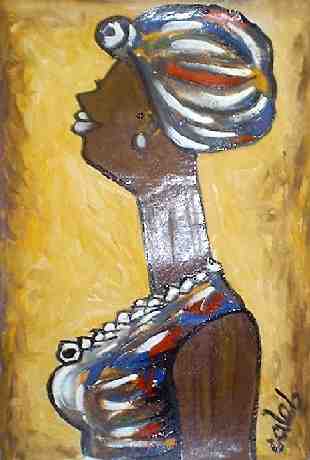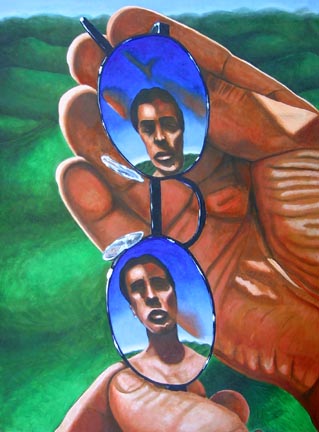I think one thing we should remember is that no society is monolithic, so neither will its art be. Different segments of a society will have their own art, whether "fine" or "folk" or whatever, and their art will say a lot about that people-group.
We should be sure to look into who has control of the "means of production" of fine art (I'm not a fan of Marx, but marxist criticism has some useful terms!) In other words, fine art is often the province of the privileged classes because only they have the leisure to practice and the means to afford materials and instruction. On the other hand, an artist from a low socioeconomic station may have to rely on wealthy patrons for subsistence.


http://www.rebirth.co.za/
african_paintings_caleb2.htm
http://www.amitmay.com/
Art%20Gallery/Previous%20
Exhibitions/Solitude/
solitude1.htm
One way to go about planning a unit might be to start with a variety of artworks from different cultures and artists of different socioeconomic backgrounds. You could give some background on each artist, including colorful information about his life and the culture in which he lived.
Have the students do some freewriting in response to one of the artworks, including how the art makes them feel, what it makes them think of, what symbolic imagery they see, etc. It might also be a good idea to pair an artwork with a literary text or other relevant cultural objects for context and comparison. Consider political influences, such as slavery, women's rights, war, etc.
Students could then locate one or more pieces of art to study on their own. They could do a project in which they research the background of the artist and his culture, concentrating on factors that might have impacted his art. They might try to find what other people have said about the art (possibly contemporary art reviews or other critical writings), then give their own "take" on it.